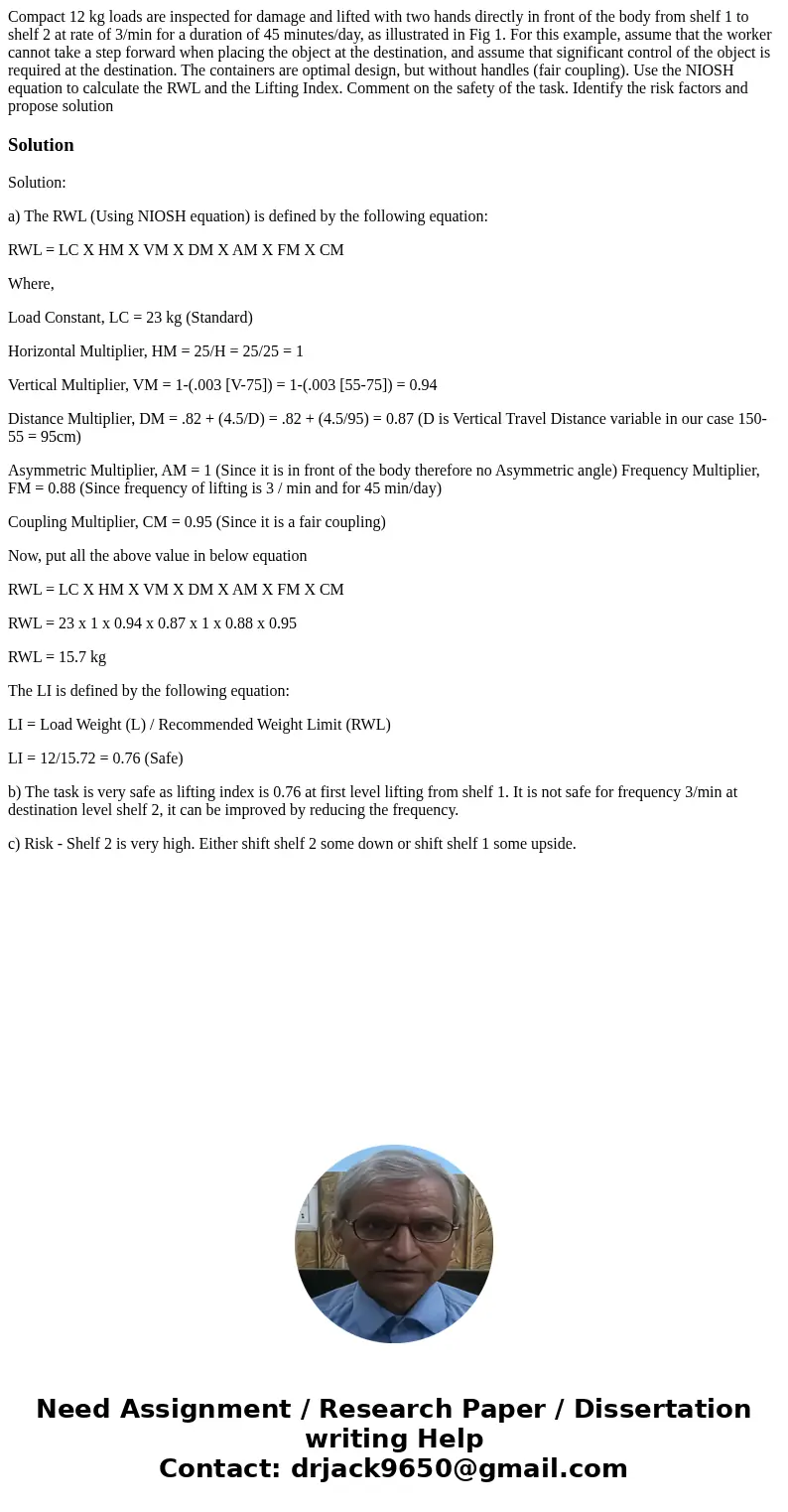Compact 12 kg loads are inspected for damage and lifted with
Solution
Solution:
a) The RWL (Using NIOSH equation) is defined by the following equation:
RWL = LC X HM X VM X DM X AM X FM X CM
Where,
Load Constant, LC = 23 kg (Standard)
Horizontal Multiplier, HM = 25/H = 25/25 = 1
Vertical Multiplier, VM = 1-(.003 [V-75]) = 1-(.003 [55-75]) = 0.94
Distance Multiplier, DM = .82 + (4.5/D) = .82 + (4.5/95) = 0.87 (D is Vertical Travel Distance variable in our case 150-55 = 95cm)
Asymmetric Multiplier, AM = 1 (Since it is in front of the body therefore no Asymmetric angle) Frequency Multiplier, FM = 0.88 (Since frequency of lifting is 3 / min and for 45 min/day)
Coupling Multiplier, CM = 0.95 (Since it is a fair coupling)
Now, put all the above value in below equation
RWL = LC X HM X VM X DM X AM X FM X CM
RWL = 23 x 1 x 0.94 x 0.87 x 1 x 0.88 x 0.95
RWL = 15.7 kg
The LI is defined by the following equation:
LI = Load Weight (L) / Recommended Weight Limit (RWL)
LI = 12/15.72 = 0.76 (Safe)
b) The task is very safe as lifting index is 0.76 at first level lifting from shelf 1. It is not safe for frequency 3/min at destination level shelf 2, it can be improved by reducing the frequency.
c) Risk - Shelf 2 is very high. Either shift shelf 2 some down or shift shelf 1 some upside.

 Homework Sourse
Homework Sourse